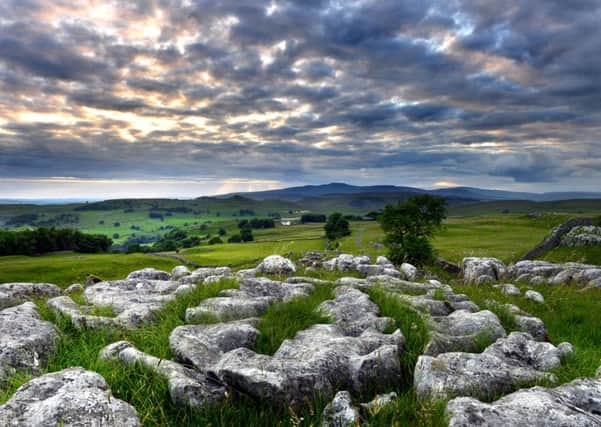Picture Post: Limestone scars above Stainforth, North Yorkshire


Those familiar with the area will know the weather here can be unpredictable, although this view, looking across to Ingleborough as the sun casts its last rays through a sombre, leaden sky, looks pleasant enough.
The limestone we see today is, in fact, the bed of an ancient shallow sea. It was formed by the slow deposition of shell creatures and other chemical processes over millions of years, then compressed to form an extremely hard rock which is impervious to most forms of erosion. It is, therefore, slow to wear, being dissolved at a wearisome pace by slightly acidic rain over tens of thousands of years. Nowadays the land here is swathed in a patchwork of verdant fields, delineated by stone walls, themselves hoary with age and etched into the landscape as though by some artist’s hand.
Advertisement
Hide AdAdvertisement
Hide AdIt is a sight which has stirred the hearts of those who behold it for countless generations. ‘Dales’ is the old Norse word for valleys, which dissect the moors and fells, with their long shoulders of rock, rising up above deep-steep sided vales, wherein towns find at least some measure of shelter.
Stainforth (and Little Stainforth) derives its name from the Saxon and means ‘stony ford’, straddling as it does the River Ribble.
The busy market town of Settle is also Anglo-Saxon in origin and means, simply, ‘settlement’. It is thought to date from the 7th century but it was lain waste in 1069 by William the Conqueror as he travelled north to impose his reign and put down pockets of resistance. For many years thereafter, the whole area was described as ‘a waste’.
Settle, however, recovered sufficiently so that by 1248, it was granted its first Market Charter. It became a farming town, although today one of its main industries is tourism, it being at one end of the famous Settle-Carlisle Railway.
Technical details: Nikon D4, Nikkor 24-70, 100th sec @ f8, 400asa. Taken on July 12.